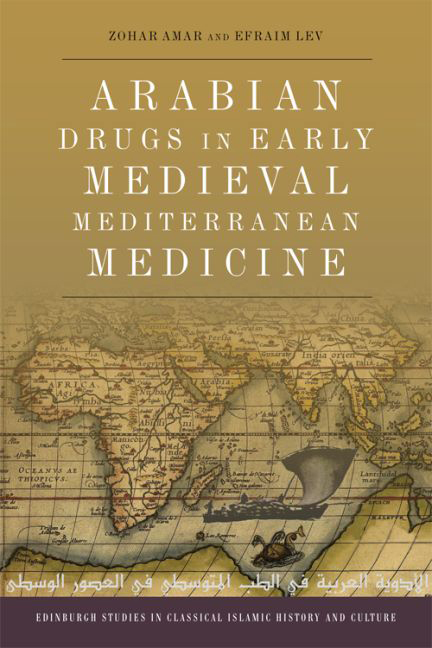Book contents
- Frontmatter
- Contents
- List of Plates
- List of Tables
- Preface
- Map: The Origin of the Main Medieval Arabian Drugs
- 1 Introduction
- 2 Agricultural and Pharmaceutical Innovations: Milestones in Research and Case Studies
- 3 ‘Arabian’ Substances
- 4 Discussion and Conclusions
- Bibliography
- Index of English Names
- Index of Arabic Names
- Index of Scientific Names
3 - ‘Arabian’ Substances
Published online by Cambridge University Press: 27 April 2017
- Frontmatter
- Contents
- List of Plates
- List of Tables
- Preface
- Map: The Origin of the Main Medieval Arabian Drugs
- 1 Introduction
- 2 Agricultural and Pharmaceutical Innovations: Milestones in Research and Case Studies
- 3 ‘Arabian’ Substances
- 4 Discussion and Conclusions
- Bibliography
- Index of English Names
- Index of Arabic Names
- Index of Scientific Names
Summary
This chapter is dedicated to the description of the main medicinal substances that were distributed as a result of the Muslim conquests. Out of nearly 100 substances, we have chosen to present nearly half, for which we dedicate entries. Most of the entries discuss substances that were clearly identified, along with evidence of practical uses in medical books and prescriptions, as well as commercial documents. In general, we have not included compound drugs or other substances regarding of whose identification the later practitioners (twelfth and thirteenth centuries) were not certain.
Moreover, we have not included agriculture crops, which had already been studied and published by Watson; in other words, we are dealing here with typical medicinal substances, some of which were also used as spices, perfumes, dyes and gemstones. These drugs were commonly used for long periods, many of them until the nineteenth century. In this manner, the long-term contribution of the Arabs in introducing the ‘new’ drugs in the Old World will be clearly demonstrated.
Each entry is constructed according to the following pattern:
1. Names: English, Arabic, scientific
2. Description and phyto-geographical distribution
3. Substance origin according to the written sources and philological analysis
4. Evidence of trade and anecdotes
5. Medicine: qualities, nature, degree (according to the Humoral Doctrine), description of the main medical uses and other uses according to the medical literature, prescriptions and so forth.
- Type
- Chapter
- Information
- Arabian Drugs in Early Medieval Mediterranean Medicine , pp. 82 - 259Publisher: Edinburgh University PressPrint publication year: 2017



